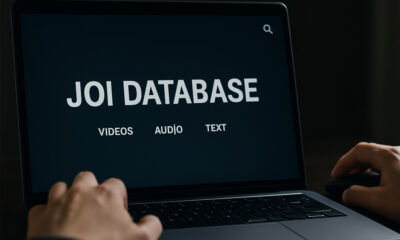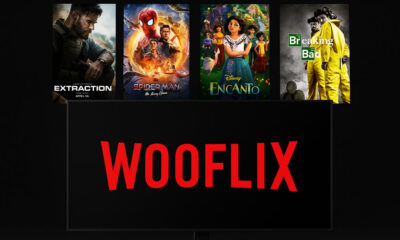Technology
Programming for Absolute Beginners: Your First Guide to the World of Code
Published
2 months agoon

The beginning of your programming adventure may seem intimidating, as it involves lots of unfamiliar terms and concepts. But here’s the truth: Coding is just telling computers in clear, step-by-step instructions how to solve a problem. Consider it like writing a recipe, where you break a complicated task into small steps. Not so, pseudocode can be your playground where you write algorithm steps down in English, but with no need to translate them into code. This puts programming within reach of anyone who wants to learn, regardless of their technical experience level.
Today, programming is one of the most valuable skills in our digital society. Code makes it easy to do everything from the apps on our phones to the websites we visit every day. The best part? You don’t have to be a math whiz or log years of formal study. All it takes is curiosity, patience, and the capacity to learn from mistakes.
Breaking Down Common Programming Myths
Let’s bust a few myths that may be getting in the way of you launching your coding journey.
- You have to be a genius to code. This is far from the truth. Programming is more an issue of problem-solving and tenacity than raw intelligence. Success involves breaking down large, complex problems into small, manageable steps and tackling them one by one.
- You have to be great at math. Although certain genres of programming need math, most of the everyday coding is just multiplying two numbers and thinking logically. Chances are, you’re going to be performing addition and comparisons more often than advanced calculus.
- Now is not the time to learn. Age is never a limitation to learn programming. So many great developers started in their 40s and later. The tech sector prizes problem-solving abilities and creativity instead of age.
- Coding is boring and technical. Programming is incredibly creative and rewarding. You are essentially making ideas live, constructing solutions that will help thousands of people, and patterning digital experiences that did not previously exist.
Choosing Your First Programming Language
Your first programming language should be chosen with your goals and interests in mind. Here are some beginner-friendly options:
For beginners, Python is certainly the friendliest language as it has readymade, clean, and organised code using readable syntax. It’s flexible for web development, data science, machine learning, and automation tasks.
The language that makes the web interactive because it’s running in every browser. JavaScript is a must-learn, and whether you want to program websites or web apps, etc., it is needed.
Sure, HTML and CSS aren’t technically programming languages, but they are essential for web development. HTML is the skeleton of webpages, and CSS is their make-up.
Java still reigns in enterprise applications and Android development, but it is much harder to learn than Python.
What are you into: web development (JavaScript, HTML/CSS), mobile apps (Swift on iOS, Java for Android), or just programming in general (Python)?
Setting Up Your Development Environment
Getting started requires minimal setup. You just need a computer and an internet connection. You can use a basic text editor for your first couple of programs, but other tools make programming easier.
Visual Studio Code is a great blend of simplicity and capabilities. It is free, lightweight, and offers support for a variety of programming languages with syntax highlighting and code completion.
No installation is required in the case of online coding platforms. Replit lets you run code in the browser for a variety of languages, and CodeSandbox is great if you’re working on web dev projects.
For the interactive learning bent, modules like Gimkit code games will help peel back the layers of programming and make it fun. These online learning spaces, known as game codes that teachers can create for their classes, are hosted by Gimkit. com/join and input the code that applies.
Essential Programming Concepts
Comprehending these basic ideas is the building block of any programming language:
Variables are anything that can store a value. Think of them as boxes labeled to show what kind of information they hold.
Data types tell you what sorts of things a variable can hold: numbers, text, true/false values, and so on.
Control structures tell your program which way to go. Loops loop, as in repeat an action many times, and conditionals condition, that is, making decisions based on some rules or conditions.
Functions are self-contained blocks of code that do a specific task. They aid in structuring your program and prevent redundancy.
Writing Your First Program
Maybe start with the old “Hello, World!” program. This is just a basic example of how to output things and return the fact that your development setup works as expected.
This is an example of how a basic program layout might look:
- Your variables and data:
- Process or manipulate that data
- Display results or perform actions
- Handle any potential errors
Don’t forget, your initial programs do not have to be complicated. You should concentrate on what each line is doing rather than creating fancy applications.
Debugging: Your New Superpower
Debugging is the process of finding and fixing errors in your code. Debugging consumes a significant amount of time for all programmers, whether beginners or experienced. That’s not an indication of failure; it is a normal part of the development process.
Common error types include:
- Typing mistakes (typos or misuse of syntax)
- Bugs with logic (the code works, but generates incorrect results)
- Run-time errors (eg, a crash while code is being run)
The vast majority of programming languages have debugging features that allow you to go step by step through code and see what the value of the variables is at various points.
Programming Statistics That Matter
| Learning Metric | Statistic | Source |
|---|---|---|
| Time to basic proficiency | 3–6 months with consistent practice | Industry surveys |
| Career change success rate | 65% of bootcamp graduates find jobs within 6 months | Coding bootcamp reports |
| Average starting salary | $50,000–$70,000 for entry-level positions | Job market data |
| Most in-demand skills | JavaScript, Python, SQL | Developer surveys |
Resources for Continued Learning
Free Online Platforms:
- FreeCodeCamp gives away coding tutorials with certificates
- Interactive courses on Khan Academy for programming.
- Codecademy delivers hands-on coding lessons
Structured Learning:
- Pages to programming courses of universities on Coursera or edX
- Udemy features practical, project-based tutorials
Community Support:
- Stack Overflow when needing help with (particular) coding problem(s)
- Reddit programming communities for more open-ended discussions
- Local Meetups and coding groups that you can be part of to have some human support.
Building Your Programming Foundation
Being able to program opens a lot of doors lying ahead, from being able to build your own projects all the way up to starting a new career. The magic is in starting small, being consistent with your actions, and embracing the process of learning.
All good professional programmers start right where you are today. They encountered the same struggles, messed up in similar ways, and developed their abilities through repetition and determination. Your path to programming is yours, and there’s no hurry to learn all of it at once.
Try to get the base concepts right, keep practicing, and feel free to try new things. More importantly, please stop and celebrate the small achievements along the way; every “Hello, World!” program and fixing bugs is real progress towards your goals.

Data Privacy and Confidentiality in Legal AI: Keeping Sensitive Matters Secure

Jodi Faeth: What Happened to Mike Wolfe’s Ex-Wife After Divorce?

How GEO Helps Startups Compete With Enterprise-Level AI Visibility

Who Is Cassandra Marino? Caitlyn Jenner’s Daughter Who Lives a Private Life

Get to Know Nathan Andersen: A. J. Cook’s Husband and Proud Family Man

From Digital to Tangible: The Human Impact of Cryptocurrency to Fiat Adoption

The Real Story of Melissa Meeks, Jeremy Meeks’ Famous Ex-Wife

MegaCustom: Personal Gifts Made Beautiful

Design Something Special with MegaCustom

Top 10 SEO Agencies for Barber Shops

Who Is Marlene Knaus? The Untold Story of Niki Lauda’s First Wife

Curious About JOI Database? Read This First Before You Click Anything

Jacqueline Bernice Mitchell: The Inspiring Story of Jerry Rice’s Ex-Wife

Should You Use Wooflix in 2025? Honest Review and Best Alternatives

Where Is Noelle Watters Now? Jesse Watters’ Ex-Wife’s Life After Divorce

Where Is Barbara Boothe Now? Inside Her Life After Larry Ellison

Alisande Ullman Today: What Happened After Her Divorce from Leslie Nielsen?

Where Is Tanya Hijazi Now?: All About Rick James’ Former Wife

Wendy Lang: Meet the Therapist Married to Cenk Uygur

Mickey Middleton: The Untold Story of Bryan Cranston’s First Wife

Data Privacy and Confidentiality in Legal AI: Keeping Sensitive Matters Secure

Jodi Faeth: What Happened to Mike Wolfe’s Ex-Wife After Divorce?

How GEO Helps Startups Compete With Enterprise-Level AI Visibility

Who Is Cassandra Marino? Caitlyn Jenner’s Daughter Who Lives a Private Life

Get to Know Nathan Andersen: A. J. Cook’s Husband and Proud Family Man

From Digital to Tangible: The Human Impact of Cryptocurrency to Fiat Adoption

The Real Story of Melissa Meeks, Jeremy Meeks’ Famous Ex-Wife

MegaCustom: Personal Gifts Made Beautiful

Design Something Special with MegaCustom

Top 10 SEO Agencies for Barber Shops
Categories
Trending
-

 Celebrity6 months ago
Celebrity6 months agoWho Is Marlene Knaus? The Untold Story of Niki Lauda’s First Wife
-

 Entertainment5 months ago
Entertainment5 months agoCurious About JOI Database? Read This First Before You Click Anything
-

 Celebrity3 months ago
Celebrity3 months agoJacqueline Bernice Mitchell: The Inspiring Story of Jerry Rice’s Ex-Wife
-

 Entertainment5 months ago
Entertainment5 months agoShould You Use Wooflix in 2025? Honest Review and Best Alternatives
